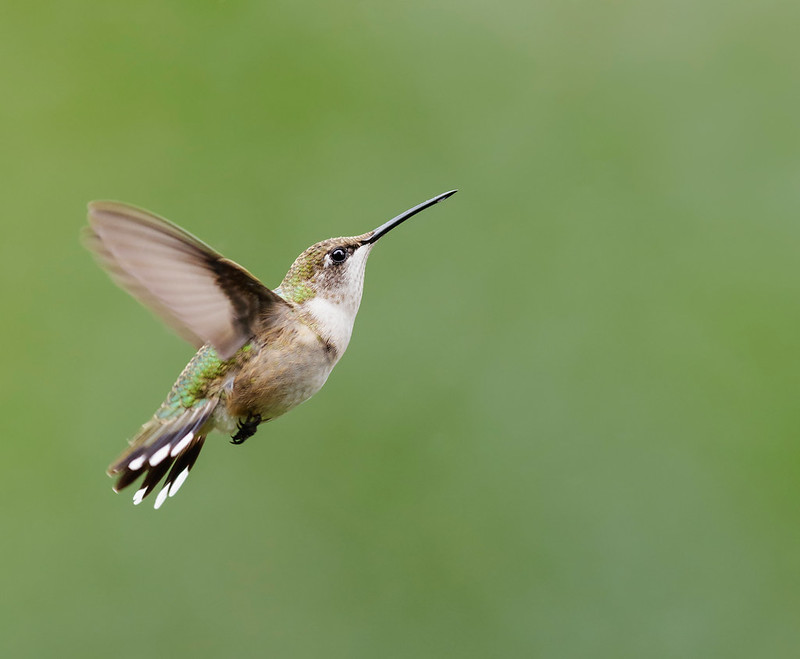- Of the 82 bird species considered in an analysis, the distribution of 66 changed during pandemic-related shutdowns, and most of them grew in abundance in and around human settlements.
- The researchers gathered more than 4 million records from eBird, a community science program that relies on contributions from volunteers, both amateur and specialist birders.
- The study in Science Advances captured how sensitive birds are to human activities and highlighted how small adjustments could make areas used by humans welcoming to other species.
An analysis of bird sightings in Canada and the U.S. showed that many North American species, from mighty eagles to diminutive hummingbirds, gained ground during COVID-19 lockdowns as humans sheltered in place.
“Bald eagles changed their use of the entire North American continent,” said Nicola Koper, professor of conservation biology at the University of Manitoba and a co-author of a recent paper in the journal Science Advances. These iconic eagles, Haliaeetus leucocephalus, homed in on counties where traffic was at its lowest ebb due to strict lockdowns.
“Hummingbirds more than tripled in abundance near airports,” Koper said.
Of the 82 species considered, the distribution of 66 changed during pandemic-related shutdowns. The general trend was of growing abundance in areas where human activity was muted. “It shows how sensitive they are to changes in human behavior,” Koper said, “even small alterations in how humans move in their environment impacts birds.”

The researchers gathered more than 4 million records from the eBird database, a platform that relies on contributions from volunteers, a flock that includes amateur bird enthusiasts and professional birders. Since the forum has been around for a while, the scientists could compare species abundance from May to June 2020 to the same period in previous years.
“This is an amazing study. The team leveraged large data sets collected by the community-science program eBird, to investigate how birds across North America responded to lockdowns in early 2020,” said Christian Rutz, biology professor at the University of St. Andrews, Scotland, who was not involved in the study.
The WHO declared COVID-19 a pandemic in March 2020, precipitating shutdowns and travel restrictions across the world. Rutz’s team coined the term “anthropause” for the unprecedented decline in human activity, especially travel, in that period.
Many people have turned to nature during the pandemic, a trend that has persisted in 2021. On Global Big Day in May, an annual bird-watching festival, more than 2 million observations were added on the eBird website, shattering records.
The change in birder behavior presented a challenge for the ecologists because data about abundance had to be weighed against the spike in birding interest and effort. To ensure this did not bias their results, the study authors were selective about which data they used and relied on observations made by experienced birders.
This collective record-keeping also revealed that migratory birds stopped over in urban surroundings more frequently than before. These breaks influence their survival chances, so making urban landscapes more welcoming could have tangible conservation benefits.

But this adaptability is also a silent reproach. It shows what a disruptive role humans play in the environment, displacing wildlife from otherwise suitable habitats. While infrastructure like roads and airports fundamentally transform landscapes, some forms of degradation are more insidious.
“The main driver of bird decline is habitat loss, but this kind of result reminds us that there is functional loss too,” Koper said. Birds need more than just the right kind of vegetation to thrive. They must be able to communicate with each other, feel safe in their surroundings, and get food.
The researchers found that among the 66 species that experienced a change in distribution, not all reacted in the same way to human disturbances. Red-tailed hawks (Buteo jamaicensis), for example, appeared more frequently in urban centers but did not patronize major roads as much during the confinement.
This study did not examine what, in particular, the birds were responding to. But previous research has shown that noise and air pollution and the risk of traffic accidents influence where they congregate.
“It is very interesting to see that the effects of lockdowns varied across bird species and environmental contexts. That is something many animal ecologists had predicted,” Rutz said.
Rutz chairs the COVID-19 Bio-Logging Initiative. The bio-logging approach takes a slightly different tack than direct human observation. It relies on GPS tracking or video devices to trace how animals navigate their surroundings. It could help paint a clearer picture of how wildlife behaved when humans were locked down.
Citations:
Schrimpf, M. B., Des Brisay, P. G., Johnston, A., Smith, A. C., Sánchez-Jasso, J., Robinson, B. G., … Koper, N. (2021). Reduced human activity during COVID-19 alters avian land use across North America. Science Advances, 7(39). doi:10.1126/sciadv.abf5073
Rutz, C., Loretto, M., Bates, A. E., Davidson, S. C., Duarte, C. M., Jetz, W., … Cagnacci, F. (2020). COVID-19 lockdown allows researchers to quantify the effects of human activity on wildlife. Nature Ecology & Evolution, 4(9), 1156-1159. doi:10.1038/s41559-020-1237-z
(Banner image of bald eagle (Haliaeetus leucocephalus). Image courtesy of Pixabay.)
"filled" - Google News
September 29, 2021 at 01:51AM
https://ift.tt/39K5vgv
When North America locked down, birds filled the gap left by people - Mongabay.com
"filled" - Google News
https://ift.tt/2ynNS75
https://ift.tt/3feNbO7
Bagikan Berita Ini














0 Response to "When North America locked down, birds filled the gap left by people - Mongabay.com"
Post a Comment